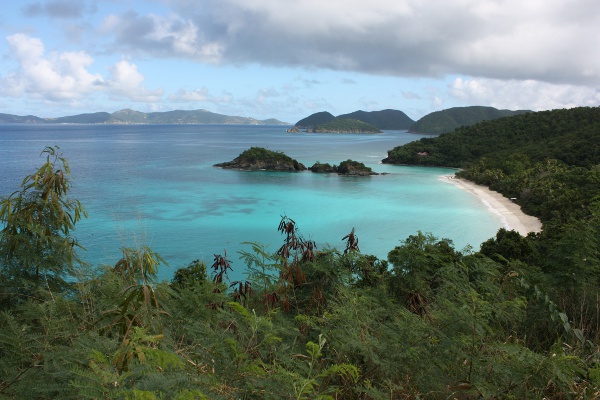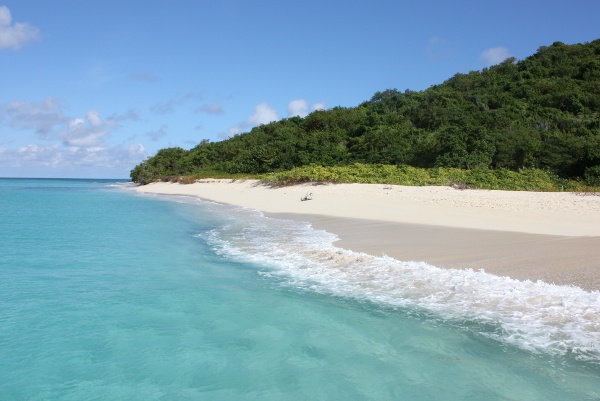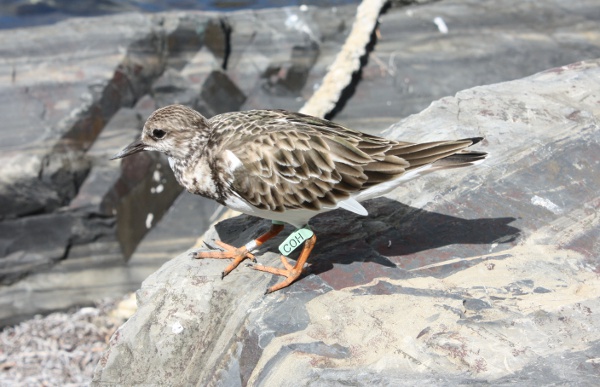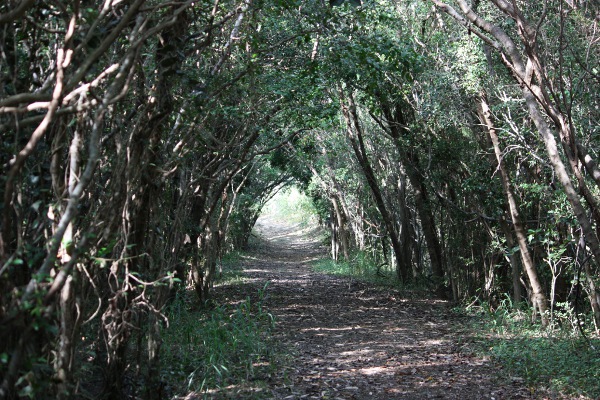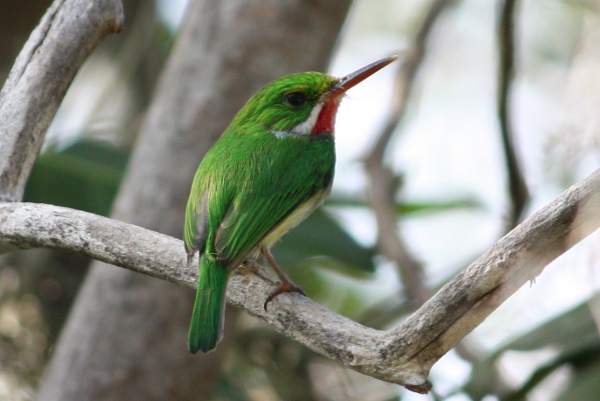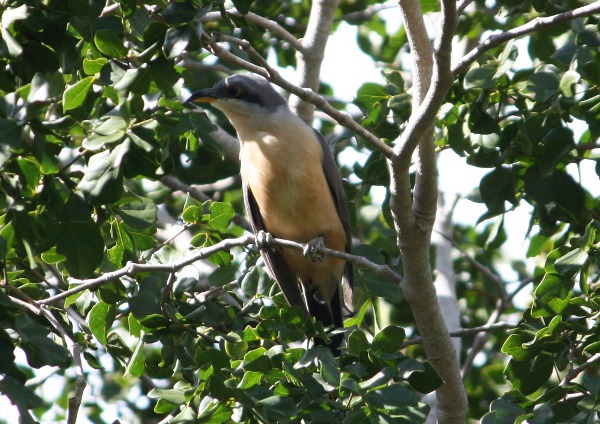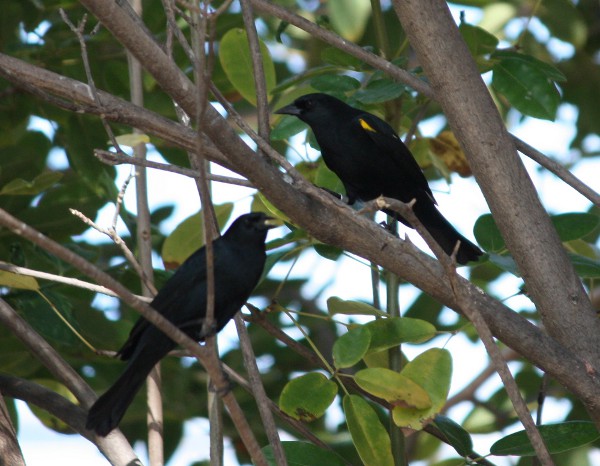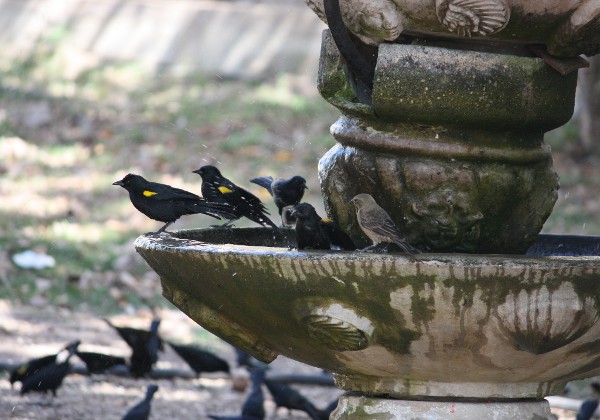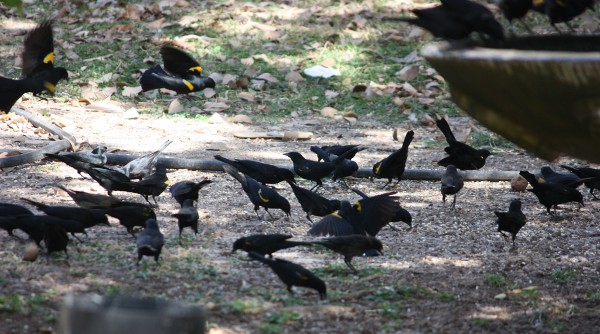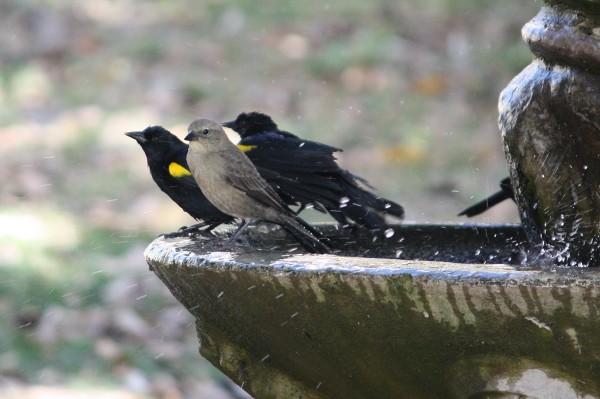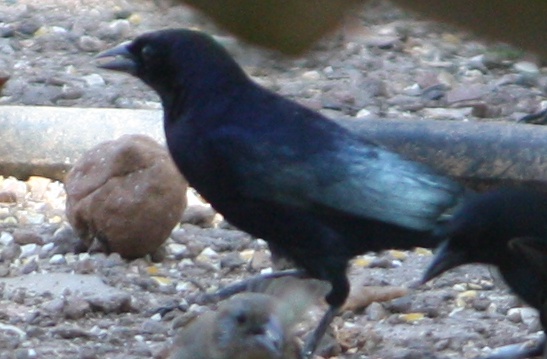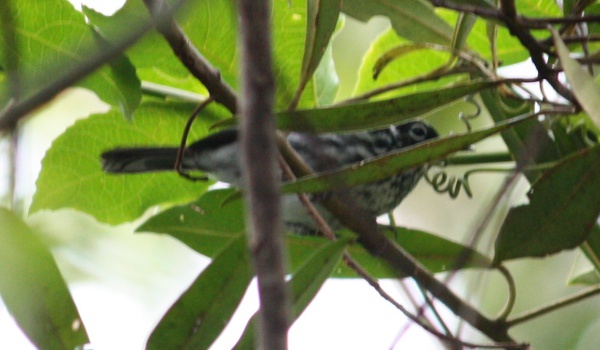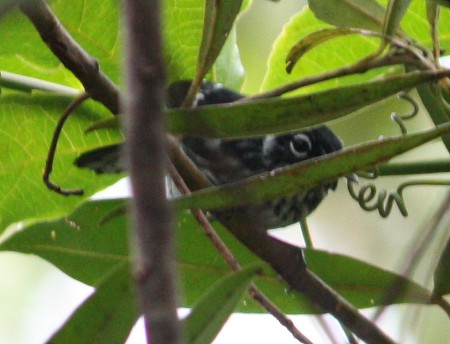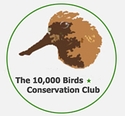Caribbean Cruise, Part 2: Antigua
December 14, 2010
Antigua was the one port-of-call on our cruise where there wasn’t anything that my wife and I really wanted to do. This island is known for its beaches, but we aren’t really “beach people”. And for me, there were no birds that couldn’t be found elsewhere. So we decided to check what excursions the cruise line offered. We decided on one that would take us kayaking among mangroves and then snorkeling off of Great Bird Island. Great Bird Island sounded promising!
On the bus ride from the cruise ship pier to the kayak docks it was obvious that little native vegetation is left on the island, at least in the interior. But I still spotted a couple birds, including my first Carib Grackles. Birds weren’t that plentiful in the mangroves, either. The only ones I saw were an Osprey and White-crowned Pigeon (though it would be the only one seen on the trip).
After kayaking for a little while, some motorboats took us offshore to Great Bird Island, where we could snorkel the coral reef. But before jumping in the water, we took a short (but steep!) trail up to the top of the island. What a view!
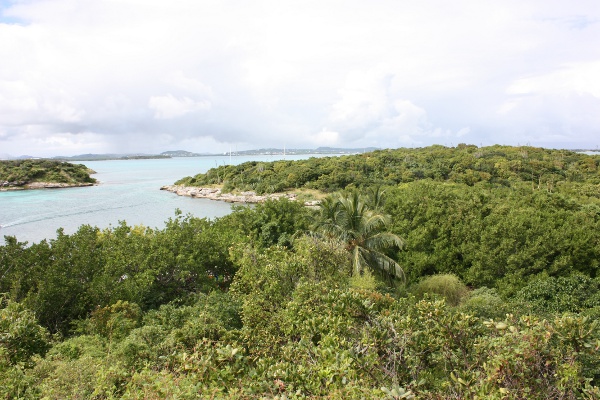
Great Bird Island, Antigua
The view got infinitely better when I spotted two white birds cavorting over the far end of the island – a pair of Red-billed Tropicbirds! These two, my first tropicbirds, were utterly magnificent and worth coming all this way to see.
Singing Yellow Warblers made me wonder if they were the local breeding “Golden” Warblers, or wintering birds. But the only look I got was one in flight. Otherwise, the only birds on this small island were a Brown Pelican, and the ever-present Gray Kingbird, and Bananaquit. The snorkeling, however, was pretty good. There wasn’t the variety of coral as Buck Island, but more fish.
While loading up the bus for the return trip, we noticed a Bananaquit building a nest right next to us. I also got a brief look at a small, plain brown bird with some red highlights on the wings. Not immediately recognizing it, I passed it off as an exotic. But while looking through the field guide later that night, I realized it was a female Lesser Antillean Bullfinch – very much a native, and a lifer to boot.
It was a good day, overall. The tropicbirds alone made up for the otherwise relative dearth of birds. And while the interior of the island doesn’t look all that appealing, the mangroves and offshore islands were very nice.
Coming up next is the Caribbean’s “Nature Island”, Dominica…
Tags: Antigua, Caribbean Cruise 2010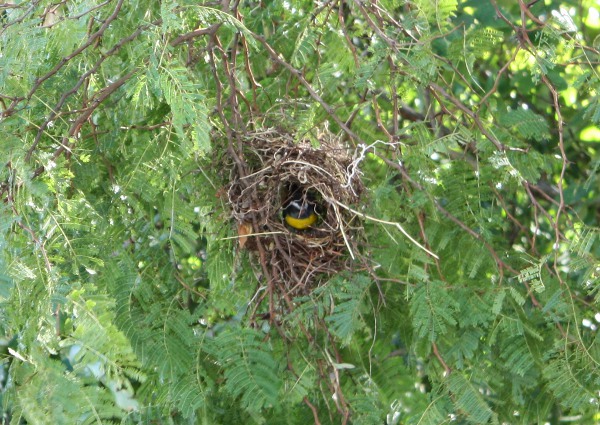
 Posted in
Posted in 
